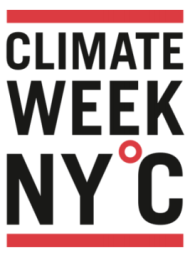NEW Community Advocacy Tools Released by WE ACT for Environmental Justice and Columbia University’s Sabin Center for Climate Change Law
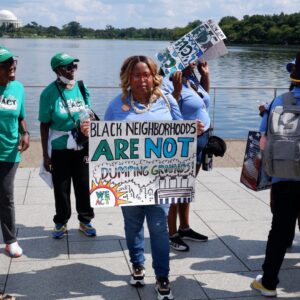
In January of 2025, the Trump Administration removed almost 80 crucial executive orders, including those supporting environmental justice, and set into motion a false “energy emergency” and directives to “Unleash American Energy.” These directives, alongside illegal funding freezes, firings of federal employees, closures of entire agency offices, as well as withdrawing from the Paris Climate Agreement and the World Health Organization show that the current administration prioritizes fossil fuel interests at the expense of human life. These efforts reverse decades of progress for equity, public health protections, and urgent climate action.
So what can we do? To meet the moment, the Sabin Center for Climate Change Law at Columbia Law School and WE ACT for Environmental Justice have partnered to create new resources to empower local environmental justice advocacy around development projects to ensure that communities are both protected from harms and can create legal agreements associated with those projects that respond to community needs and priorities.
This work is a part of the Dismantling Injustice project, which began with a series of model environmental justice legislation and resources. As part of the launch, WE ACT and the Sabin Center held a webinar on March 5, 2025 to introduce the resources and explain how they can be used most effectively. A recording of the webinar is available here.
Local Organizing Seeds Big Change
The environmental justice movement has a rich history of local advocacy spanning decades. Burdensome, health-harming, and greenhouse gas emitting development projects, such as pipelines or liquefied natural gas (LNG) terminals, are disproportionately sited in environmental justice communities, which are made up of mostly Black, Brown and low-income people. This has led to generations of community members with increased rates of cancer, asthma, heart diseases, and premature death as a result of higher-than-average exposure to fossil fuel pollution. From the historic Warren County, North Carolina 1982 protests against toxic waste dumping to the current fight to protect Chester, Pennsylvania from an LNG facility, communities of color and low-income have long stood up for their right to clean air, water, and land. Despite having limited resources and facing powerful interests, community groups have taken on multi-billion-dollar industries and won!
Finding a Path to Protect Public Health
Communities most affected by polluting infrastructure are the experts in the needs and the harms they face. However, several barriers prevent community voices from being adequately heard and considered in the development of such projects. A particular challenge is that the legal frameworks governing development projects can be complex and opaque. Another hurdle is that some projects utilize new and evolving technologies like carbon capture and sequestration (CCS), which environmental justice advocates identify as part of many “False Solutions.” Industry claims these technologies cut greenhouse gases driving the climate crisis, but they actually reinforce our fossil fuel dependence, increase pollution, and burden communities further. At the same time, LNG exports, and build out of natural gas pipelines and terminals continue to grow at unprecedented rates, making the U.S. the largest exporter in the world. These projects, largely sited across Gulf states, seriously negatively impact residents.
Community Advocacy Tools
The goal of these new resources is to help local residents and organizations understand legal frameworks and their options in advocating for their health, well-being, and prosperity. These resources, which include fact sheets on the legal frameworks governing carbon dioxide (CO2) and natural gas infrastructure and a template for community benefit agreements (CBAs), will provide communities with knowledge and tools they need to overcome these challenges.
CO2 and Natural Gas Infrastructure Fact Sheets
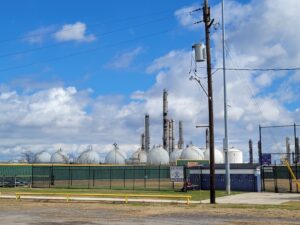
The first community advocacy resource consists of fact sheets on four topics related to carbon dioxide (CO2) and natural gas infrastructure: (1) CO2 pipelines, (2) carbon capture and storage infrastructure, (3) LNG terminals, and (4) natural gas pipelines.
Each fact sheet provides an overview of the legal framework governing that type of project. This includes a description of which federal and state agencies are involved in regulating the infrastructure, what laws are relevant, and how regulation is distributed between the federal and state governments. Each fact sheet also offers a list of ways community advocates can get involved. These range from speaking at public hearings held by a state agency considering a permit to submitting comments in a federal rulemaking to regulate pipeline safety.
There are two available versions of the fact sheets. In the shorter version, each fact sheet is one page and contains a high level summary of the legal framework and ways to get involved. This would be most appropriate as an introduction to community advocacy around these types of projects. In the longer version, each fact sheet is two pages and contains more detailed information on the relevant laws and regulations, and how those legal authorities inform public participation. The longer version also has a one page executive summary with key takeaways across all four topics. Although still designed to be accessible and easily digestible, this version could be more helpful for advocates who are more familiar with these federal and state regulatory regimes, or who are actively preparing to get involved and need a deeper understanding of the legal issues.
Community Benefit Agreement Template
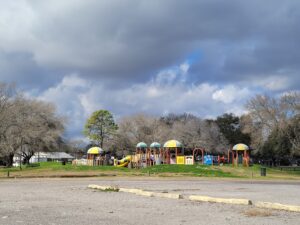
The second community advocacy resource is a template for a Community Benefit Agreement, or CBA. A CBA is a legally binding contract between a developer and a community organization, coalition of organizations, or municipality. CBAs can be utilized for a variety of projects, including but not limited to pipelines, LNG terminals, hydrogen hubs, landfills, and waste management facilities—essentially any significant project that could negatively impact the health and well-being of the surrounding community. If the community decides they are willing to negotiate with a developer or the community is unlikely to successfully oppose a projects’ development, a CBA can serve as a protective measure. CBAs can ensure that communities can establish legally binding safeguards and guide outcomes of major development projects; allow residents a seat at the table in planning and shaping the projects; protect community needs and interests, such as health and quality of life, throughout the duration of the project; and provide a way to legally enforce the promises that developers make to communities.
For a CBA to be successful and effective, it is important that the terms of the agreement be closely tailored to the type of project and the needs of the community parties. The former White House Environmental Justice Advisory Committee’s recent recommendations on carbon management highlight the need for clear, enforceable language in CBAs to hold developers accountable and ensure that promised benefits are delivered. The template is intended to be a jumping off point for community advocates to draft a CBA and approach negotiations. To facilitate this process, the CBA template provides example terms that would be appropriate for different projects, but also explains the purpose behind various terms so that, if an example in the template is not quite appropriate for the circumstances, community advocates understand how to approach drafting a new term to accomplish the same general goals.
Overall, the template is designed to generate ideas but promote flexibility to ensure that CBAs are responsive to community needs and priorities. Each CBA should seek to address the potential project harms that are of most concern, and the benefits that would be most valuable, to local residents. Moreover, they can serve as an important visioning exercise for communities to decide what they want for the present and future state of their neighborhood. For example, communities can negotiate safeguards in CBAs to prevent the displacement of existing residents caused by potential investments and remediation activities as part of a development project that can influence property values and spur gentrification. Utilizing best practices such as those outlined in WE ACT’s Community Engagement Brief, CBAs could be a tool for ensuring equity, accountability, and justice in development projects. Ultimately, each community’s needs are unique and a CBA may not be the appropriate action. If a community decides a CBA is the pathway they want to pursue, the template provided here may prove helpful.
Communities Shaping a Better Future
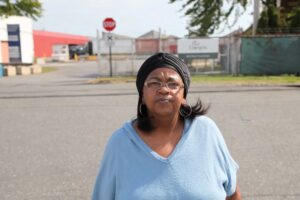
As harmful polluting projects increasingly impact vulnerable neighborhoods across the U.S., and federal environmental protections are assaulted, local advocacy toolkits are more crucial than ever. Our hope is that the Dismantling Injustice project, including our latest tools here, will continue to equip communities to best fight to protect their rights, and hold the line for a healthier, more fair future for all.




